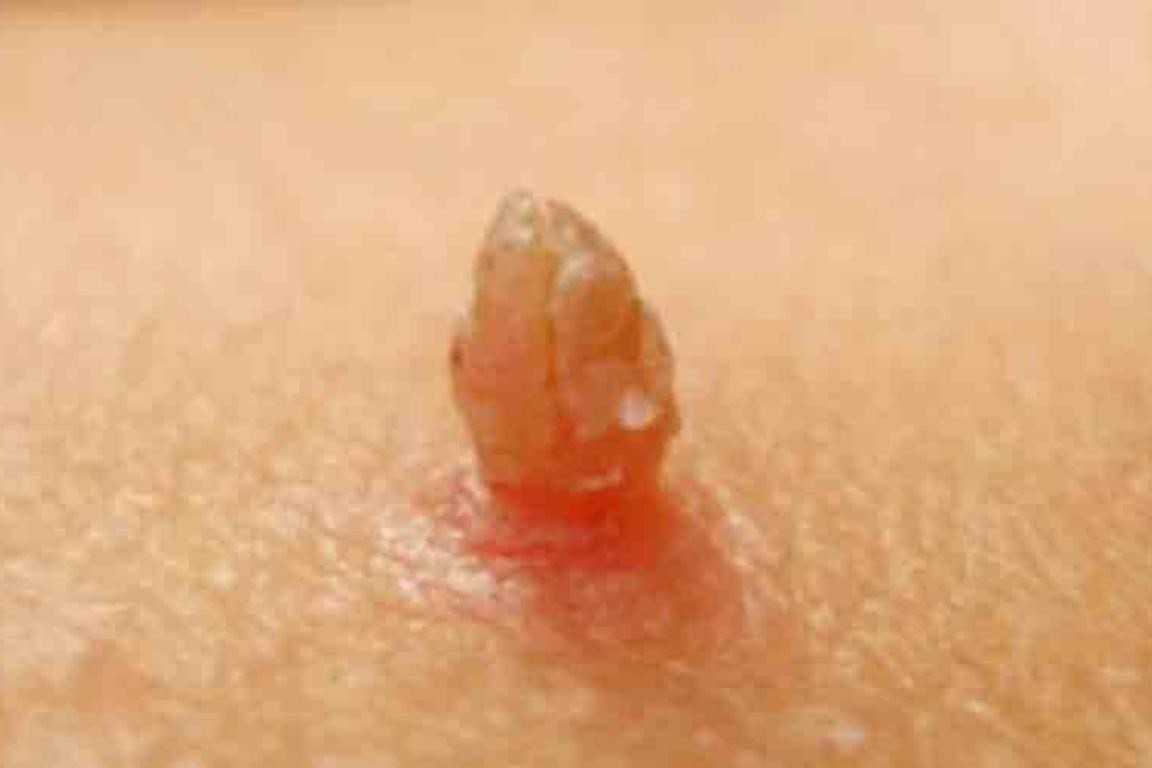
Condylomas: what they are and how to treat them
Condylomas are benign tumour lesions, mainly transmitted sexually, and caused by viruses of the papillomavirus type
How widespread are condylomas?
It has been observed in studies that the disease frequently affects immunocompromised individuals, including those who have had contact with the Acquired Immunodeficiency Virus (AIDS), with an estimated frequency ranging from 60 to 80% of cases. Homosexuals are more affected.
Mode of contagion
Sexual contact is the main mode of transmission.
The partner should also be checked and treated at the same time.
Lesions tend to spread rapidly and increase in size.
In clinical practice, individuals are observed to have developed the disease after stays in non-EU countries, following casual sexual intercourse.
How do condylomas present themselves?
The lesions appear as small exophytic, warty, whitish, pedunculated vegetations.
They affect the perianal area, the anal canal and sometimes in association or in isolation the genitals.
If they persist for a long time there is the rare possibility of tumour degeneration.
Condylomas, the diagnosis
The clinical appearance is typical and sufficient to make the diagnosis.
If the lesions date back a long time and swellings are present, a tissue sample for histological examination is indispensable.
A serological and immunological study to assess possible viral contacts and to clarify the antibody defence status may be indicated.
These investigations are not considered mandatory but precautionary, before proceeding to treatment.
Therapy
Various treatments are used, on the understanding that spontaneous healing does not normally occur and, depending on the characteristic of evolution, it is correct to initiate the planned therapies even in the presence of minimal lesions.
The main treatments are listed below:
- Local application of Podophyllin (anti-cancer agent)
- Cryotherapy (cold) with liquid nitrogen
- Local removal with scalpel or electrosurgery
- Local excision with laser
Immunostimulant therapy with Interferon, for use in baseline or relapsed immunocompromised individuals, subcutaneously or intramuscularly
The decision to carry out the planned therapies must be evaluated in relation to the site and number of lesions.
Close collaboration between the colon proctologist and the dermatologist with specific experience in the treatment of sexually transmitted diseases (STDs) would be desirable in order to define a single therapy protocol.
Per approfondire:
Emergency Live Even More…Live: Download The New Free App Of Your Newspaper For IOS And Android
Papilloma Virus Infection And Prevention
What Is The Papilloma Virus And How Can It Be Treated?
What Is Papilloma Virus And How Does It Occur In Men?
Pap Test, Or Pap Smear: What It Is And When To Do It
Rocketing Vaccine Cost Warning
The Vaccine Against HPV Lowers The Risk Of Relapse In Positive Women
HPV Vaccine: Why Vaccinating Against The Papilloma Virus Is Important For Both Sexes
Gynaecological Cancers: What To Know To Prevent Them
Vulvodynia: What Are The Symptoms And How To Treat It
What Is Vulvodynia? Symptoms, Diagnosis And Treatment: Talk To The Expert
Accumulation Of Fluid In The Peritoneal Cavity: Possible Causes And Symptoms Of Ascites
Accumulation Of Fluid In The Peritoneal Cavity: Possible Causes And Symptoms Of Ascites
What’s Causing Your Abdominal Pain And How To Treat It
Pelvic Varicocele: What It Is And How To Recognise The Symptoms
Can Endometriosis Cause Infertility?
Transvaginal Ultrasound: How It Works And Why It Is Important
Candida Albicans And Other Forms Of Vaginitis: Symptoms, Causes And Treatment
What Is Vulvovaginitis? Symptoms, Diagnosis And Treatment
Vaginal Infections: What Are The Symptoms?
Chlamydia: What Are The Symptoms And How To Treat It
Chlamydia, Symptoms And Prevention Of A Silent And Dangerous Infection
Tumours Of The Adrenal Gland: When The Oncological Component Joins The Endocrine Component


